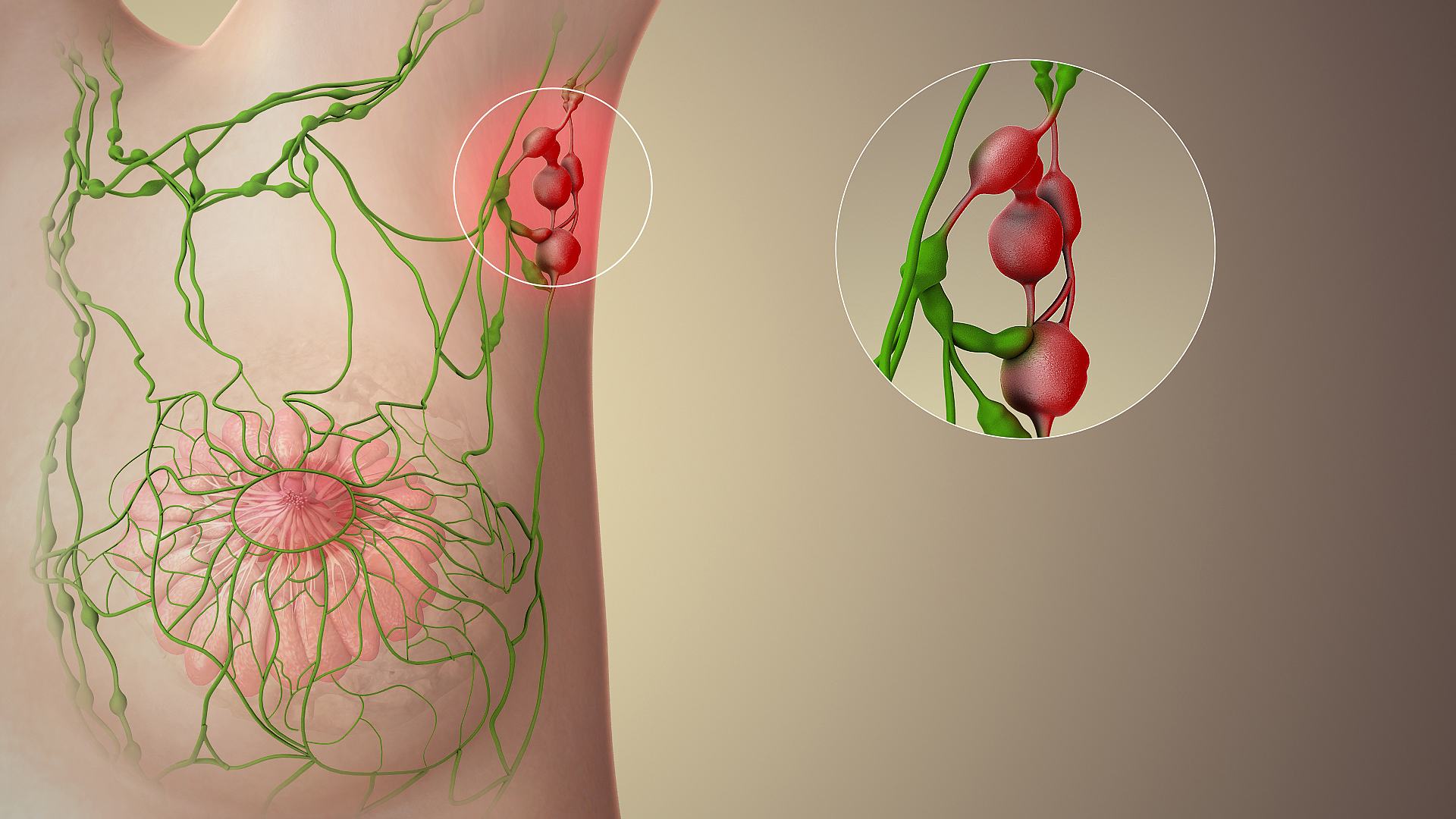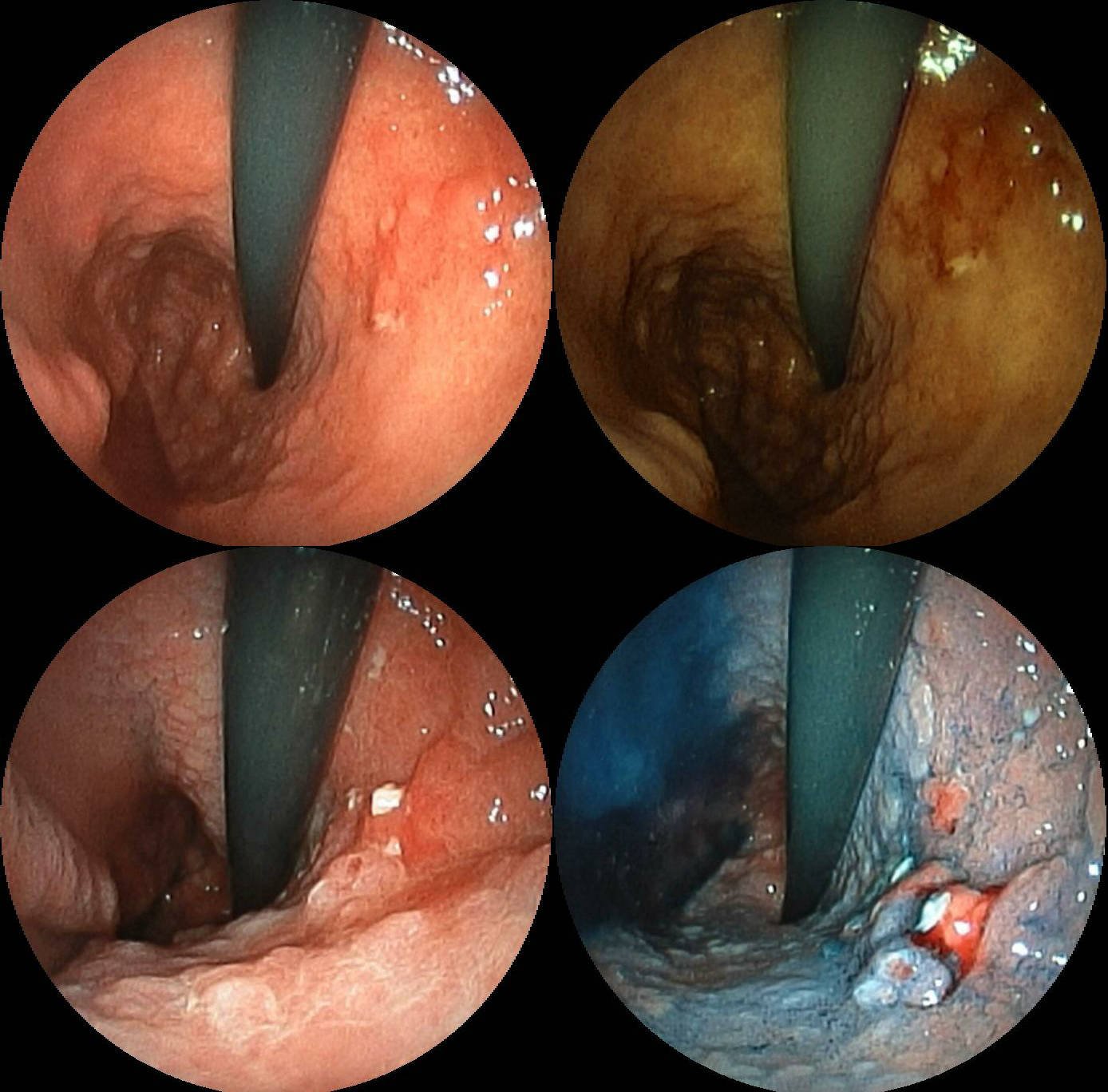|
Lymphadenectomy
Lymphadenectomy, or lymph node dissection, is the surgical removal of one or more groups of lymph nodes. It is almost always performed as part of the surgical management of cancer. In a regional lymph node dissection, some of the lymph nodes in the tumor area are removed; in a radical lymph node dissection, most or all of the lymph nodes in the tumor area are removed. Indications Lymphadenectomies are usually done because many types of cancer have a marked tendency to produce lymph node metastasis early in their natural histories. This is particularly true of melanoma, head and neck cancer, differentiated thyroid cancer, breast cancer, lung cancer, gastric cancer, and colorectal cancer. Famed British surgeon Berkeley Moynihan once remarked that "the surgery of cancer is not the surgery of organs; it is the surgery of the lymphatic system." The better-known examples of lymphadenectomy are '' axillary lymph node dissection'' for breast cancer; ''radical neck dissection'' for h ... [...More Info...] [...Related Items...] OR: [Wikipedia] [Google] [Baidu] |
Lymphocele
A lymphocele is a collection of lymphatic fluid within the body not bordered by epithelium, epithelial lining. It is usually a surgical complication seen after extensive pelvic surgery (such as cancer surgery) and is most commonly found in the retroperitoneal space. Spontaneous development is rare. Signs and symptoms Many lymphoceles are asymptomatic. Larger lymphoceles may cause symptoms related to compression of adjacent structures leading to lower abdominal pain, abdominal fullness, constipation, urinary frequency, and edema of the genitals and/or legs. Serious sequelae could develop and include infection of the lymphocele, obstruction and infection of the urinary tract, intestinal obstruction, venous thrombosis, pulmonary embolism, chylous ascites and lymphatic fistula formation. On clinical examination the skin may be reddened and swollen and a mass felt. Ultrasonography or CT scan will help to establish a diagnosis. Other fluid collections to be considered in the differen ... [...More Info...] [...Related Items...] OR: [Wikipedia] [Google] [Baidu] |
Lymphedema
Lymphedema, also known as lymphoedema and lymphatic edema, is a condition of localized edema, swelling caused by a compromised lymphatic system. The lymphatic system functions as a critical portion of the body's immune system and returns interstitial fluid to the bloodstream. Lymphedema is most frequently a complication of cancer treatment or parasitic infections, but it can also be seen in a number of genetic disorders. Tissues with lymphedema are at high risk of infection because the lymphatic system has been compromised. Though incurable and progressive, a number of treatments may improve symptoms. This commonly includes compression therapy, good skin care, exercise, and manual lymphatic drainage (MLD), which together are known as combined decongestive therapy. Diuretics are not useful. Signs and symptoms The most common manifestation of lymphedema is soft tissue swelling (edema). As the disorder progresses, worsening edema and skin changes including discoloration, verr ... [...More Info...] [...Related Items...] OR: [Wikipedia] [Google] [Baidu] |
Sentinel Lymph Node
The sentinel lymph node is the hypothetical first lymph node or group of nodes draining a cancer. In case of established cancerous dissemination it is postulated that the sentinel lymph nodes are the target organs primarily reached by metastasizing cancer cells from the tumor. The sentinel node procedure (also termed sentinel lymph node biopsy or SLNB) is the identification, removal and analysis of the sentinel lymph nodes of a particular tumour. Physiology The spread of some forms of cancer usually follows an orderly progression, spreading first to regional lymph nodes, then the next echelon of lymph nodes, and so on, since the flow of lymph is directional, meaning that some cancers spread in a predictable fashion from where the cancer started. In these cases, if the cancer spreads it will spread first to lymph nodes (lymph glands) close to the tumor before it spreads to other parts of the body. The concept of sentinel lymph node surgery is to determine if the cancer has spre ... [...More Info...] [...Related Items...] OR: [Wikipedia] [Google] [Baidu] |
Melanoma
Melanoma is the most dangerous type of skin cancer; it develops from the melanin-producing cells known as melanocytes. It typically occurs in the skin, but may rarely occur in the mouth, intestines, or eye (uveal melanoma). In very rare cases melanoma can also happen in the lung which is known as primary pulmonary melanoma and only happens in 0.01% of primary lung tumors. In women, melanomas most commonly occur on the legs; while in men, on the back. Melanoma is frequently referred to as malignant melanoma. However, the medical community stresses that there is no such thing as a 'benign melanoma' and recommends that the term 'malignant melanoma' should be avoided as redundant. About 25% of melanomas develop from nevus, moles. Changes in a mole that can indicate melanoma include increaseespecially rapid increasein size, irregular edges, change in color, itchiness, or nevus#Classification, skin breakdown. The primary cause of melanoma is ultraviolet light (UV) exposure in th ... [...More Info...] [...Related Items...] OR: [Wikipedia] [Google] [Baidu] |
Breast-conserving Surgery
Breast-conserving surgery refers to an operation that aims to remove breast cancer while avoiding a mastectomy. Different forms of this operation include: lumpectomy (tylectomy), wide local excision, segmental resection, and quadrantectomy. Breast-conserving surgery has been increasingly accepted as an alternative to mastectomy in specific patients, as it provides tumor removal while maintaining an acceptable cosmetic outcome. This page reviews the history of this operation, important considerations in decision making and patient selection, and the emerging field of oncoplastic breast conservation surgery. Medical uses For clinical stages I and II breast cancer, breast-conserving surgery, with radiotherapy and possibly chemotherapy may be indicated if one or two sentinel lymph nodes are found to have cancer which is not extensive. In this case, the sentinel lymph nodes would be examined, and lymphadenectomy as further evaluation is not indicated as this result from the sent ... [...More Info...] [...Related Items...] OR: [Wikipedia] [Google] [Baidu] |
Lymphedema
Lymphedema, also known as lymphoedema and lymphatic edema, is a condition of localized edema, swelling caused by a compromised lymphatic system. The lymphatic system functions as a critical portion of the body's immune system and returns interstitial fluid to the bloodstream. Lymphedema is most frequently a complication of cancer treatment or parasitic infections, but it can also be seen in a number of genetic disorders. Tissues with lymphedema are at high risk of infection because the lymphatic system has been compromised. Though incurable and progressive, a number of treatments may improve symptoms. This commonly includes compression therapy, good skin care, exercise, and manual lymphatic drainage (MLD), which together are known as combined decongestive therapy. Diuretics are not useful. Signs and symptoms The most common manifestation of lymphedema is soft tissue swelling (edema). As the disorder progresses, worsening edema and skin changes including discoloration, verr ... [...More Info...] [...Related Items...] OR: [Wikipedia] [Google] [Baidu] |
Gastric Cancer
Stomach cancer, also known as gastric cancer, is a malignant tumor of the stomach. It is a cancer that develops in the lining of the stomach. Most cases of stomach cancers are gastric carcinomas, which can be divided into a number of subtypes, including gastric adenocarcinomas. Lymphomas and mesenchymal tumors may also develop in the stomach. Early symptoms may include heartburn, upper abdominal pain, nausea, and loss of appetite. Later signs and symptoms may include weight loss, yellowing of the skin and whites of the eyes, vomiting, difficulty swallowing, and blood in the stool, among others. The cancer may spread from the stomach to other parts of the body, particularly the liver, lungs, bones, lining of the abdomen, and lymph nodes. The bacterium ''Helicobacter pylori'' accounts for more than 60% of cases of stomach cancer. Certain strains of ''H. pylori'' have greater risks than others. Smoking, dietary factors such as pickled vegetables and obesity are other ris ... [...More Info...] [...Related Items...] OR: [Wikipedia] [Google] [Baidu] |
Surgical Oncology
Surgical oncology is the branch of surgery applied to oncology; it focuses on the surgical management of tumors, especially cancerous tumors. As one of several modalities in the management of cancer, the specialty of surgical oncology has evolved in steps similar to medical oncology (pharmacotherapy for cancer), which grew out of hematology, and radiation oncology, which grew out of radiology. The Ewing Society—known today as the Society of Surgical Oncology—was started by surgeons interested in promoting the field of oncology. In 2011, the American Board of Surgery ratified Complex General Surgical Oncology via a specialty Board certification. The field was expected to continue expanding via the proliferation of cancer centers, as well as advanced minimally invasive techniques, palliative surgery, and neo-adjuvant treatments. Debate Whether surgical oncology qualifies as a distinct medical specialty remains a topic of heated debate. Today, many agree that it is impractica ... [...More Info...] [...Related Items...] OR: [Wikipedia] [Google] [Baidu] |
Neck Dissection
The neck dissection is a surgical procedure for control of neck lymph node metastasis from squamous cell carcinoma (SCC) of the head and neck. The aim of the procedure is to remove lymph nodes from one side of the neck into which cancer cells may have migrated. Metastasis of squamous cell carcinoma into the lymph nodes of the neck reduce survival and is the most important factor in the spread of the disease. The metastases may originate from SCC of the upper aerodigestive tract, including the oral cavity, tongue, nasopharynx, oropharynx, hypopharynx, and larynx, as well as the thyroid, parotid and posterior scalp. History of neck dissections * 1906 – George W. Crile of the Cleveland Clinic describes the radical neck dissection. The operation encompasses removal of all the lymph nodes on one side of the neck, and includes removal of the spinal accessory nerve (SAN), internal jugular vein (IJV) and sternocleidomastoid muscle (SCM). * 1957 – Hayes Martin describes routine use of ... [...More Info...] [...Related Items...] OR: [Wikipedia] [Google] [Baidu] |
Lymph Node
A lymph node, or lymph gland, is a kidney-shaped organ of the lymphatic system and the adaptive immune system. A large number of lymph nodes are linked throughout the body by the lymphatic vessels. They are major sites of lymphocytes that include B and T cells. Lymph nodes are important for the proper functioning of the immune system, acting as filters for foreign particles including cancer cells, but have no detoxification function. In the lymphatic system, a lymph node is a secondary lymphoid organ. A lymph node is enclosed in a fibrous capsule and is made up of an outer cortex and an inner medulla. Lymph nodes become inflamed or enlarged in various diseases, which may range from trivial throat infections to life-threatening cancers. The condition of lymph nodes is very important in cancer staging, which decides the treatment to be used and determines the prognosis. Lymphadenopathy refers to glands that are enlarged or swollen. When inflamed or enlarged, lymph nodes can ... [...More Info...] [...Related Items...] OR: [Wikipedia] [Google] [Baidu] |
Choosing Wisely
Choosing Wisely is a United States–based health educational campaign, led by the ABIM Foundation (American Board of Internal Medicine), about unnecessary health care. The campaign identifies over 500 tests and procedures and encourages doctors and patients to discuss, research, and possibly get second opinions, before proceeding with them. To conduct the campaign, the ABIM Foundation asks Specialty (medicine), medical specialty societies to make five to ten recommendations for preventing overuse of a treatment in their field. The foundation then publicizes this information, and the medical specialty societies disseminate it to their members. The campaign has garnered both praise and criticism, and some of its ideas have spread to other countries. It does not include evaluation of its effects on costs, on discussions or on medical outcomes. Some doctors have said they lack time for the recommended discussions. History In 2002 the ABIM Foundation published ''Medical professiona ... [...More Info...] [...Related Items...] OR: [Wikipedia] [Google] [Baidu] |
Chemotherapy
Chemotherapy (often abbreviated chemo, sometimes CTX and CTx) is the type of cancer treatment that uses one or more anti-cancer drugs (list of chemotherapeutic agents, chemotherapeutic agents or alkylating agents) in a standard chemotherapy regimen, regimen. Chemotherapy may be given with a cure, curative intent (which almost always involves combinations of drugs), or it may aim only to prolong life or to Palliative care, reduce symptoms (Palliative care, palliative chemotherapy). Chemotherapy is one of the major categories of the medical discipline specifically devoted to pharmacotherapy for cancer, which is called ''oncology#Specialties, medical oncology''. The term ''chemotherapy'' now means the non-specific use of intracellular poisons to inhibit mitosis (cell division) or to induce DNA damage (naturally occurring), DNA damage (so that DNA repair can augment chemotherapy). This meaning excludes the more-selective agents that block extracellular signals (signal transduction) ... [...More Info...] [...Related Items...] OR: [Wikipedia] [Google] [Baidu] |






